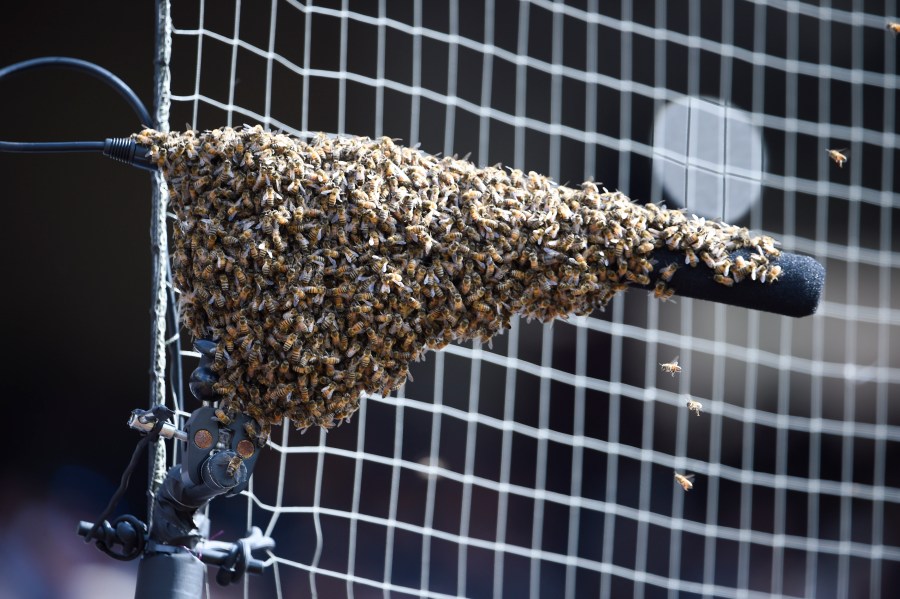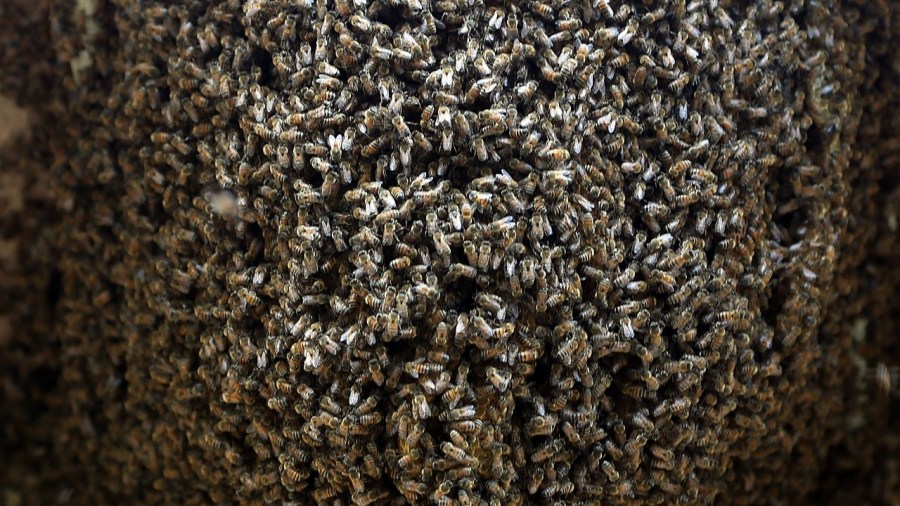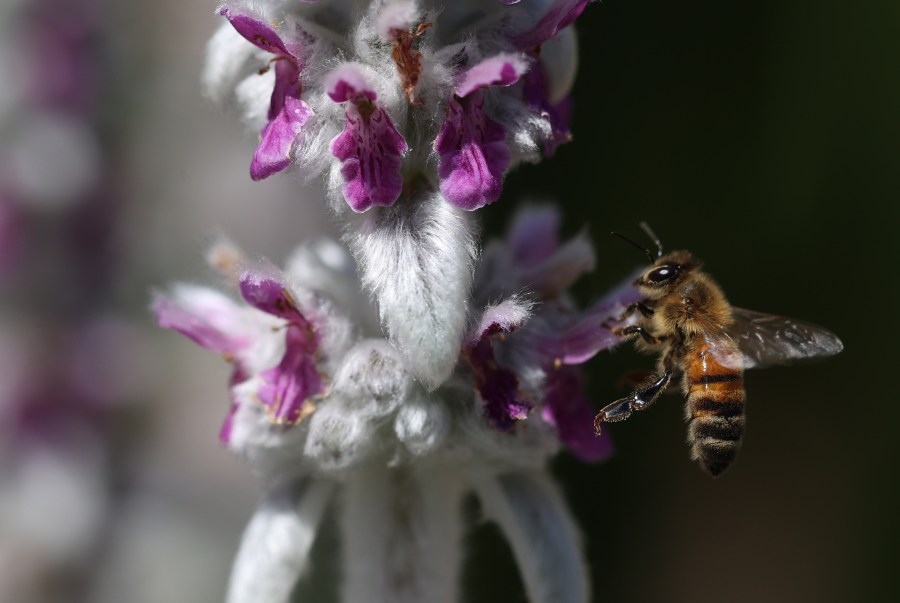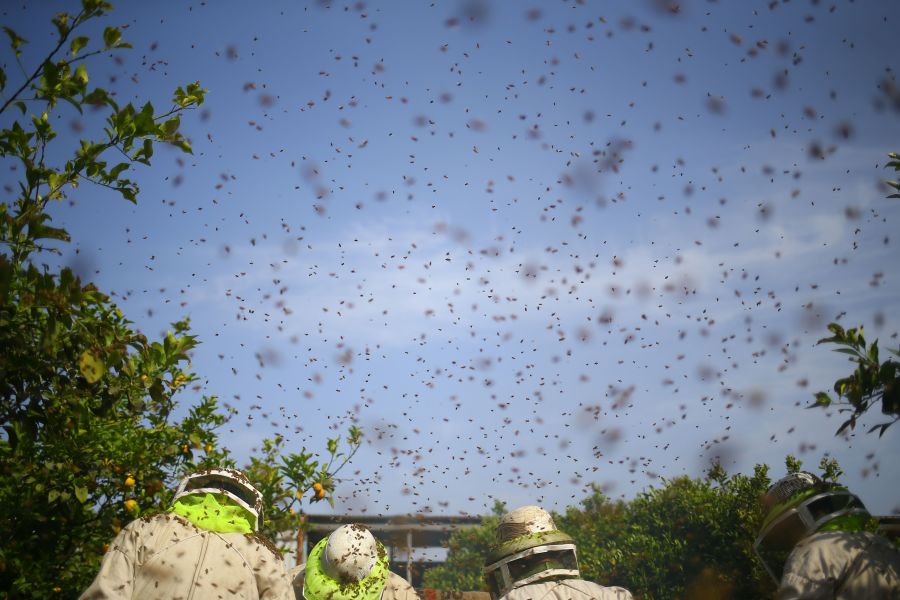BOULDER, Colo. (KDVR) – An X-ray scan was recently performed in Boulder, the recipient of which was a swarm of honeybees. Now, a question that may be buzzing in some people’s ears is: Why?
To put it pointedly, a research effort led by BioFrontiers Institute and the Department of Computer Science at CU Boulder is aiming to better understand a swarm’s “bee-havior.”
Honey puns aside, the researchers set out to learn more about how individual bees functioned as part of a swarm. Up until this point, scientists have only been able to effectively observe the exterior activity of these organized societies that function as an organic whole, also known as a superorganism.
Heralding this research effort is Dr. Orit Peleg, the Assistant Professor in the Computer Science Department and the BioFrontiers Institute at the University of Colorado Boulder, who’s been studying bees and insects for over a decade.
FOX31 spoke with Dr. Peleg to gain some insight into what her research uncovered with this first-of-its-kind X-ray and how the bee’s adaptivity can influence future engineering projects.
Honeybee swarms and cheerleader pyramids
Typically, a swarm of honeybees will reproduce by splitting in two, similar to how a human cell halves itself during the reproduction process.
According to Peleg’s study, entitled “Strength-mass scaling law governs mass distribution inside honey bee swarms,” the queen will leave the hive accompanied by half of the swarm, which will surround her in a protective shape, escorting her as they look for a new hive. The other half will remain at the original hive while they develop a new queen.
A single honeybee can carry the weight of 35 other bees. Peleg said an average specimen has six little legs with Velcro-like patches on them which are used to make physical bonds with other bees within the swarm, in an arm-locking fashion.
“Bees somehow know how to arrange themselves in order to maintain their mechanical stability,” Peleg explained.
The overall shape and weight distribution of a swarm can, Peleg said, is similar to a cheerleader pyramid, with the larger layer of bees hovering around the swarm’s lower level and the least amount at the top.
Initially, researchers could only observe this superorganism, described as looking like a wriggly Jell-O mold, from the outside. But now, the X-ray recently performed by Peleg and her team in Boulder has provided them the chance to see what’s going on inside.
Sit still swarm!
Much like getting children to sit still for school photos, convincing the bees to sit still for the scan was a bit of a hurdle.
However, the research group’s understanding of insect pheromones helped them come up with a way to coax the bees to swarm around the queen for the scan. By placing the queen in a tiny little box with holes that allowed for the passage of pheromones, Peleg and her group were able to gather a swarm for what is essentially a CT scan.
Once the swarm of roughly 1,000 bees had gathered, researchers began the scan while rotating the test subject.
What they discovered was that the use of the scaling law was present in the swarm’s adaptive nature.
What they found was that whenever an outside force is applied to a swarm, like the simulated wind test that was performed, the bees within the superorganism will unlock their legs and move to another spot within the swarm to redistribute the weight in order to re-achieve mechanical stability.
When a wind test was implemented during another study, Peleg observed the impacted swarm flattened out. When FOX31 asked if she expected this response, she said not exactly, but upon further reflection, noticed the similarities between the swarm’s shape change, and a human’s response to losing balance, which is typically to bend the knees and squat in order to stabilize.
Honeybee swarm’s adaptive ability and the implications
This study improved the researcher’s ability to better understand a swarm’s ability to react to its surrounding, but how can these principles be applied to everyday life?
“How can we take what we’ve learned about bees and apply it elsewhere,” Peleg asked.
Her department is not currently working with a robotics department as part of this research study, but discoveries made regarding mechanical stability in relation to the honeybee swarms could potentially be used in the development of robotic insect-like swarms, similar to the ones viewers of Black Mirror’s earlier seasons may be familiar with.
Additionally, the bees’ legs, which are capable of carrying impressive weight while at the same time being rather adaptable, could be used to influence the structural designs of buildings and other infrastructure.

(Photo by Denis Poroy/Getty Images)
When asked what’s next for her research efforts, Peleg said that comparing and testing a swarm’s ability to attach to different surfaces, for example, a metal surface, would reveal more.
She also mentioned that learning everything there is to know about how an individual bee moves around and functions within the swarm hasn’t yet been achieved, so more scans could be likely.
Hopefully, that question that was buzzing ear-adjacent has been addressed. Be sure to keep an eye on Dr. Peleg’s efforts at the BioFrontier Institute as they continue to conduct groundbreaking research that could lead to a society designed to replicate the efficiency and unity of the honeybee swarm.




